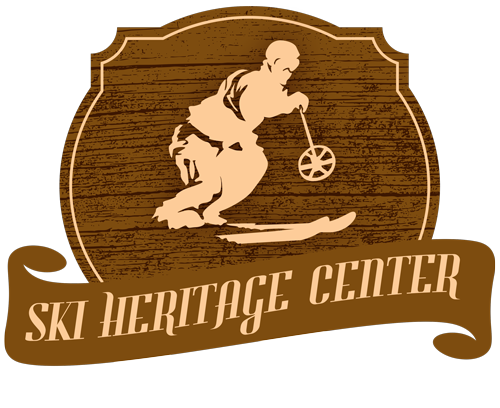The Big Mountain Ptarmigan Tracks Part #1
Reprinted from The Big Mountain Ptarmigan Tracks, March 23, 1984
As we sat over coffee down in Whitefish, we took a long look up at The Big Mountain and tried to envision what it was like - the skiing - before the ski area existed. But we didn't have to imagine very hard. Sitting there with us to recall those times were Lloyd Muldown (Mully) and Lyle Rutherford. They're two of a group of local pioneers from the original Hellroarng Ski Club, who in the early days earned along the spirit of skiing and the myth of the mountains.
It all started with the first cabin back in 1935. That's not when the first skiing was done in the area, but it. was the added feature of the cabins that made skiing in the Hellroaring drainage more accessible, provided shelter and a take-off point for ski excursions, and created a wide-spread appeal for enthusiasts of the sport.
Before the cabins were built, the 2 – 2 1/2 hour long trek in and up on sheep trails began at the present Big Mountain turnoff on East Lakeshore Drive. That led "skiers"' to just above the current village area. From there, it was onward and upward again. What was the ultimate ski experience they were seeking? It was to ski down from the top of that big mountain. ''That was the goal of all our attempts,” Mully admits. "I think the first time was in the winter of ‘34 that we got to the top." The first cabin was constructed ·by the Hellroaring Ski Club in '35 - '36. 'Al F1y packed materials in on a government mule train to the site, between the present C-2 and C-3 road, next to a year-round spring. Lyle Rutherford and Ole Dalen headed up the building of the second, larger club cabin in 1937.
Bunks in the cabins were made of rope hammocks, and barrel stoves provided heat and hot water. (That reminded Lyle and Mully of the time that a visiting skier. drained all the water out of the tank because he couldn’t sleep due to. the. Loud burping noise made by the escaping steam.) Some of the money donated to build the cabins came from a group of locals, and when there was an objection raised about the co-ed bunting arrangements, the smaller cabin was adapted to house the ladies.
By the time the cabins were in use. Local unemployment was high as the Depression settled ·on the country. But during the years between 1936 and World War II, there was an emphasis on fun, social activities, and the lighter side of life in the community of Whitefish, in spite of bad times and WPA (Works Projects Administration). After all, it wasn't like living in a city where - there was fertile land to raise crops, plenty of game, and wood for the taking. So the cabins saw lots of visitors, and the core of the Hellroaring group skied all winter long.
''The fellers would sit around down there in the cabins and say (to other skiers) 'you haven't skied yet until you go over there on that big mountain, that's where the skiing is. Unless you’ve been up there, you really haven’t been around this area’ ”, Mully told us.
